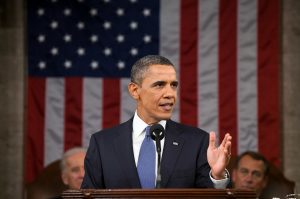[ad_1]

July 12, 2022
Public-Sector Pensions Weathered Pandemic
The financial turmoil within the early months of the pandemic – a plunging inventory market and hovering unemployment – posed an actual menace to state and native authorities pension funds and the employees who depend on them.
One group was notably weak: public-sector employees who aren’t coated by Social Safety and lack the backstop of the federal authorities if their employer pension plans get into bother.
The Heart for Retirement Analysis has some excellent news for these 5 million noncovered employees residing in 20 states. Their pension plans received by means of the primary two years of the pandemic unscathed.
In greenback phrases, authorities contributions to those outlined profit pension plans truly elevated throughout COVID. That and a roaring inventory market in 2021 considerably improved their monetary situation. After all, this sunny report is clouded by what is going on to the inventory market now – it has reversed course and dropped 20 % this yr.
However the researchers’ evaluation is that COVID was not the monetary catastrophe many had feared for the public-sector employees who aren’t coated by Social Safety.
The 59 noncovered plans within the research fluctuate in measurement from small native pension plans just like the Pittsburgh Police Aid and Pension Fund to the nation’s largest state plan, the California Public Staff Retirement System.
Congress’ monetary assist throughout COVID performed an essential function in stabilizing state and native governments’ funds. They acquired a whole bunch of billions in pandemic aid from the CARES Act in March 2020 and, a yr later, the American Rescue Plan. The federal aid checks to households and companies additionally added billions to state and native tax bases. Importantly, tax revenues snapped again after a quick drop in 2020, as a result of high-income employees, who pay extra in taxes, didn’t endure the dramatic layoffs skilled by low-income employees.
The federal assist offered the fiscal respiratory room for governments to make their pension contributions on schedule. In actual fact, a number of the states with probably the most poorly funded plans – specifically New Jersey and Connecticut – took benefit of the fiscal windfall to make traditionally giant contributions in 2022.
That’s to not say that public-sector plans will essentially have easy crusing from right here. Many have deep structural issues, together with damaging money stream and overly optimistic assumptions about funding returns, that might grow to be an issue sooner or later. And, once more, the current inventory market drop will depress their funding efficiency for the fiscal yr that’s winding down now.
However the pension plans have held up significantly better within the pandemic than they did in the course of the monetary disaster of 2008. COVID, the researchers have concluded, was not a replay of that catastrophe.
To learn this research, authored by Jean-Pierre Aubry and Kevin Wandrei, see “Has COVID Affected Staff with out Social Safety?”
The analysis reported herein was derived in complete or partly from analysis actions carried out pursuant to a grant from the U.S. Social Safety Administration (SSA) funded as a part of the Retirement and Incapacity Analysis Consortium. The opinions and conclusions expressed are solely these of the authors and don’t signify the opinions or coverage of SSA, any company of the federal authorities, or Boston Faculty. Neither the USA Authorities nor any company thereof, nor any of their staff, make any guarantee, specific or implied, or assumes any authorized legal responsibility or duty for the accuracy, completeness, or usefulness of the contents of this report. Reference herein to any particular business product, course of or service by commerce title, trademark, producer, or in any other case doesn’t essentially represent or suggest endorsement, suggestion or favoring by the USA Authorities or any company thereof.
[ad_2]








Leave a Reply